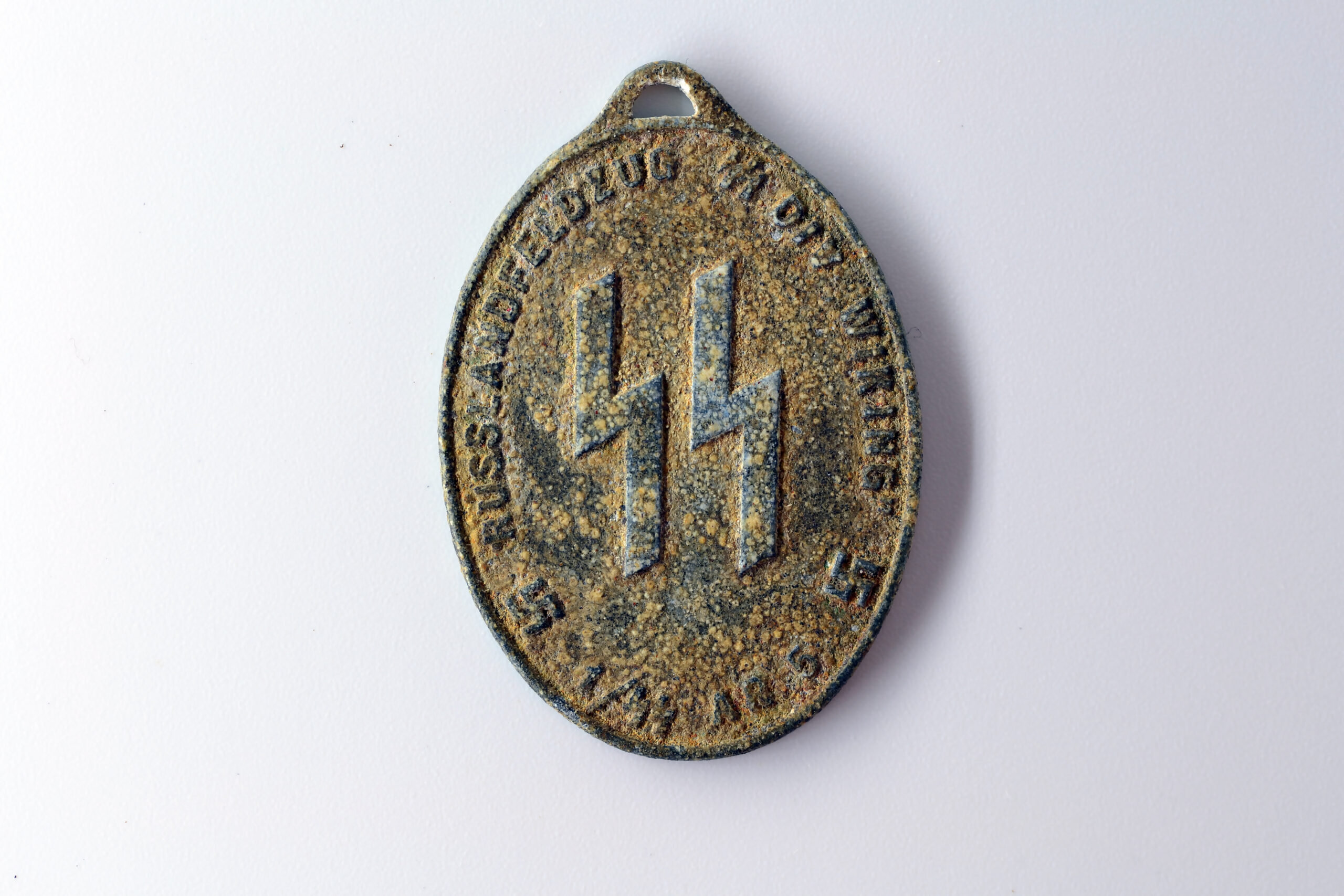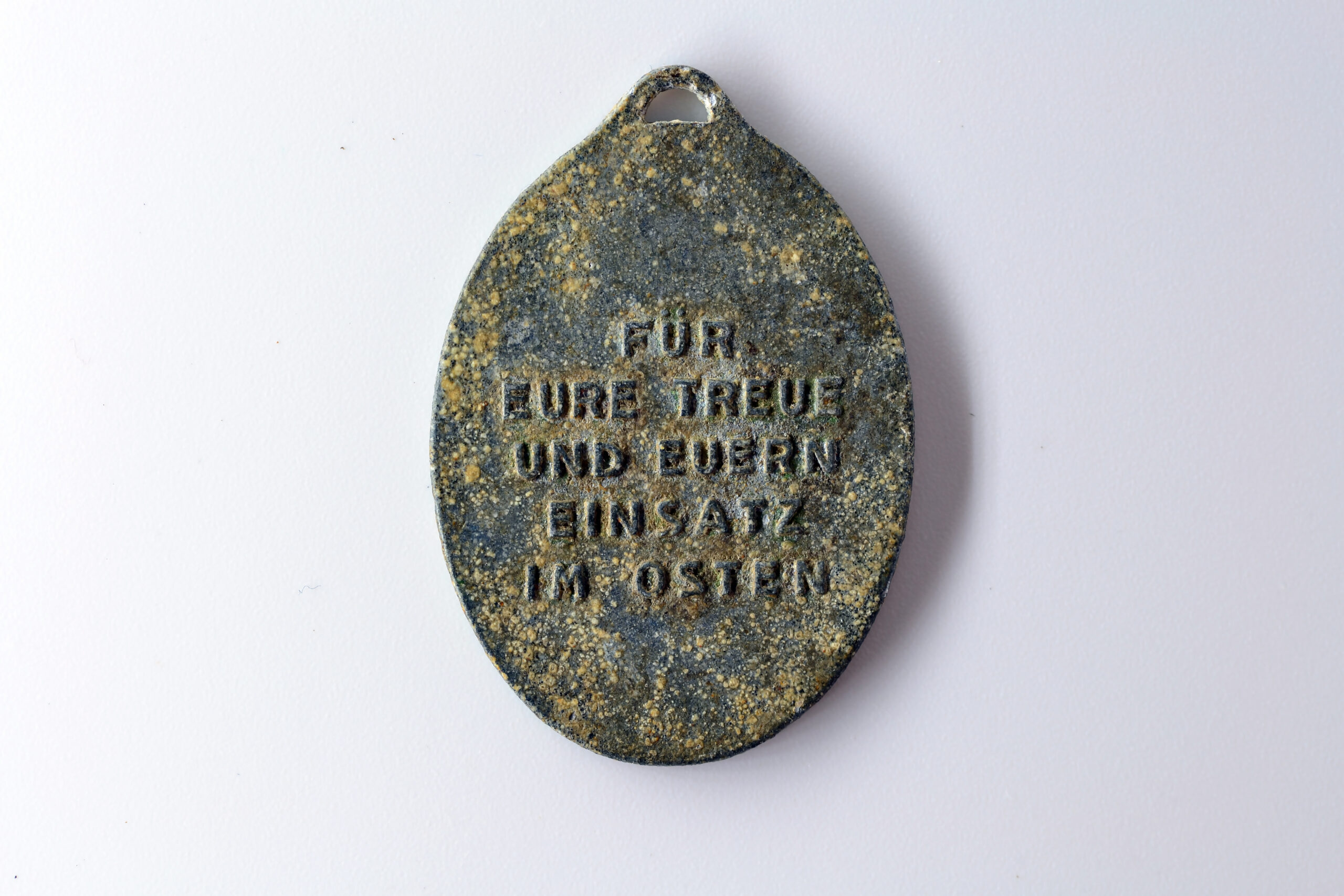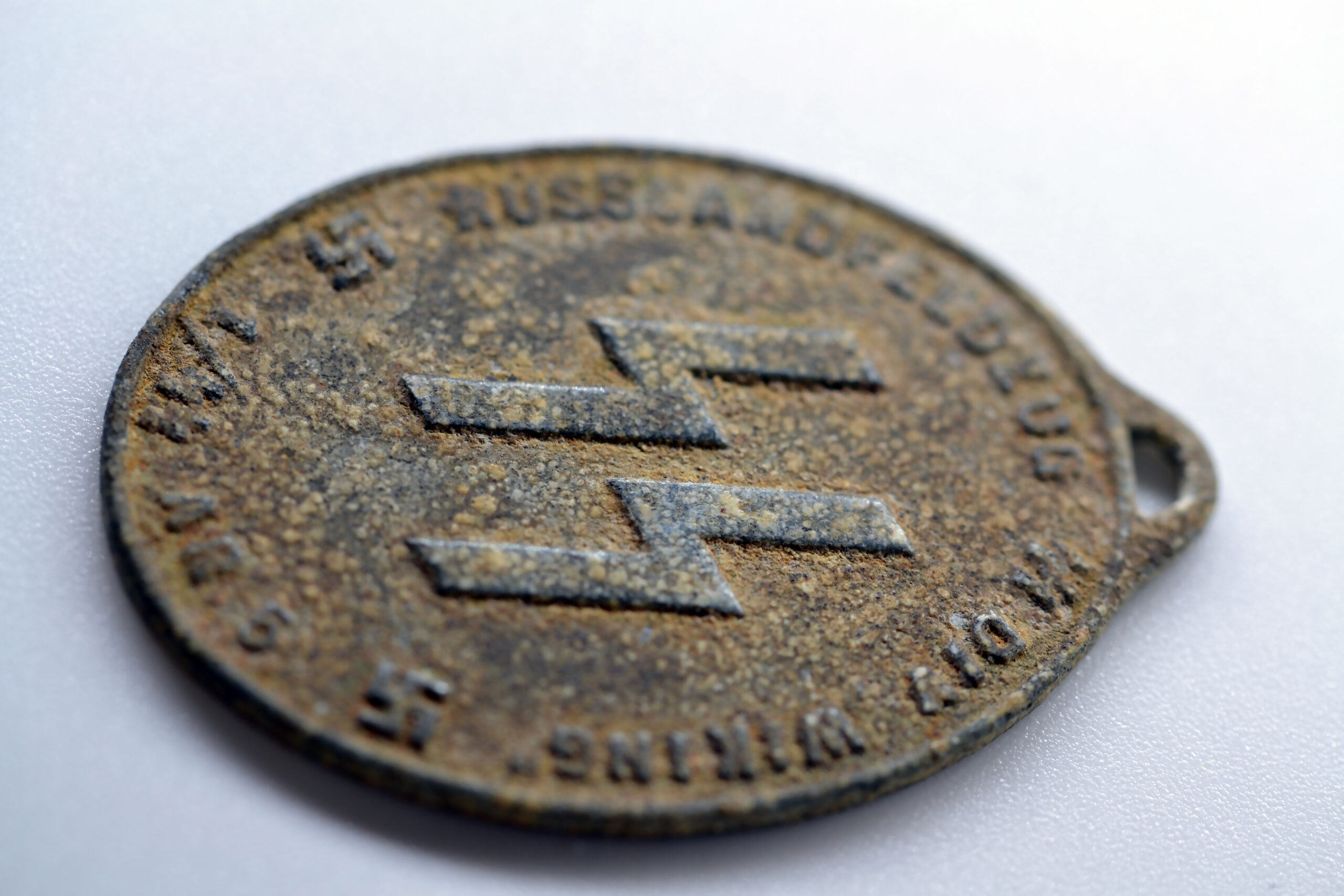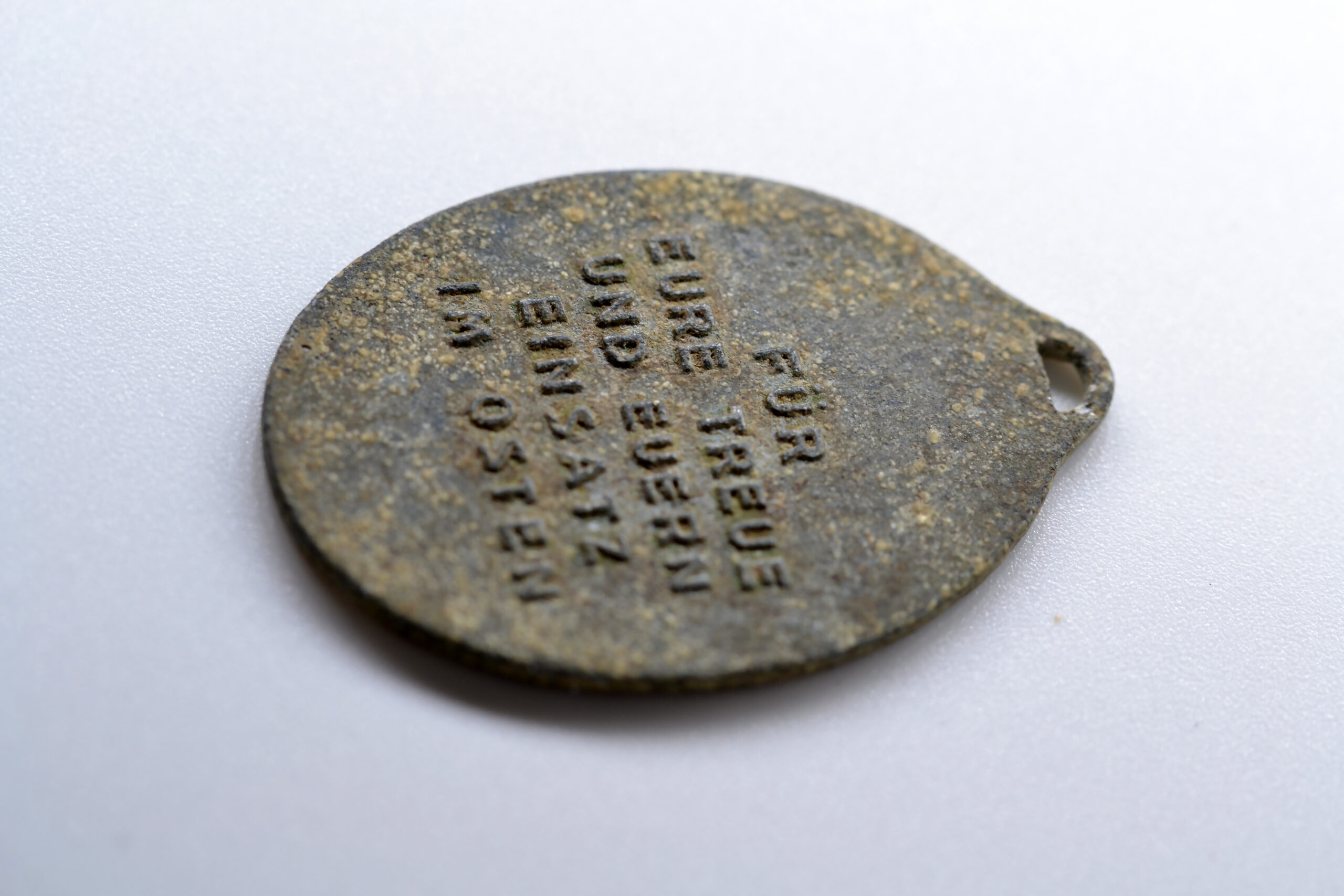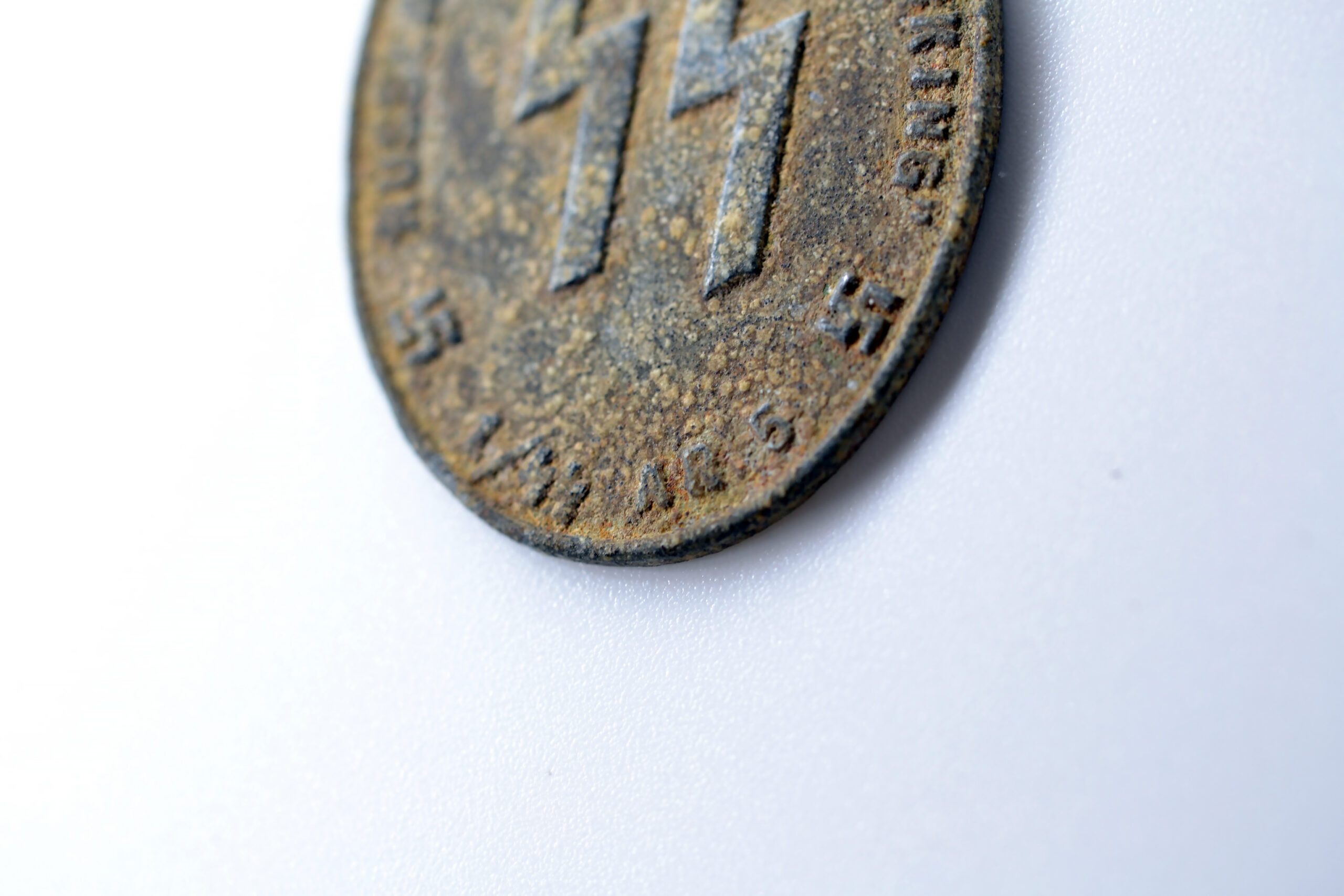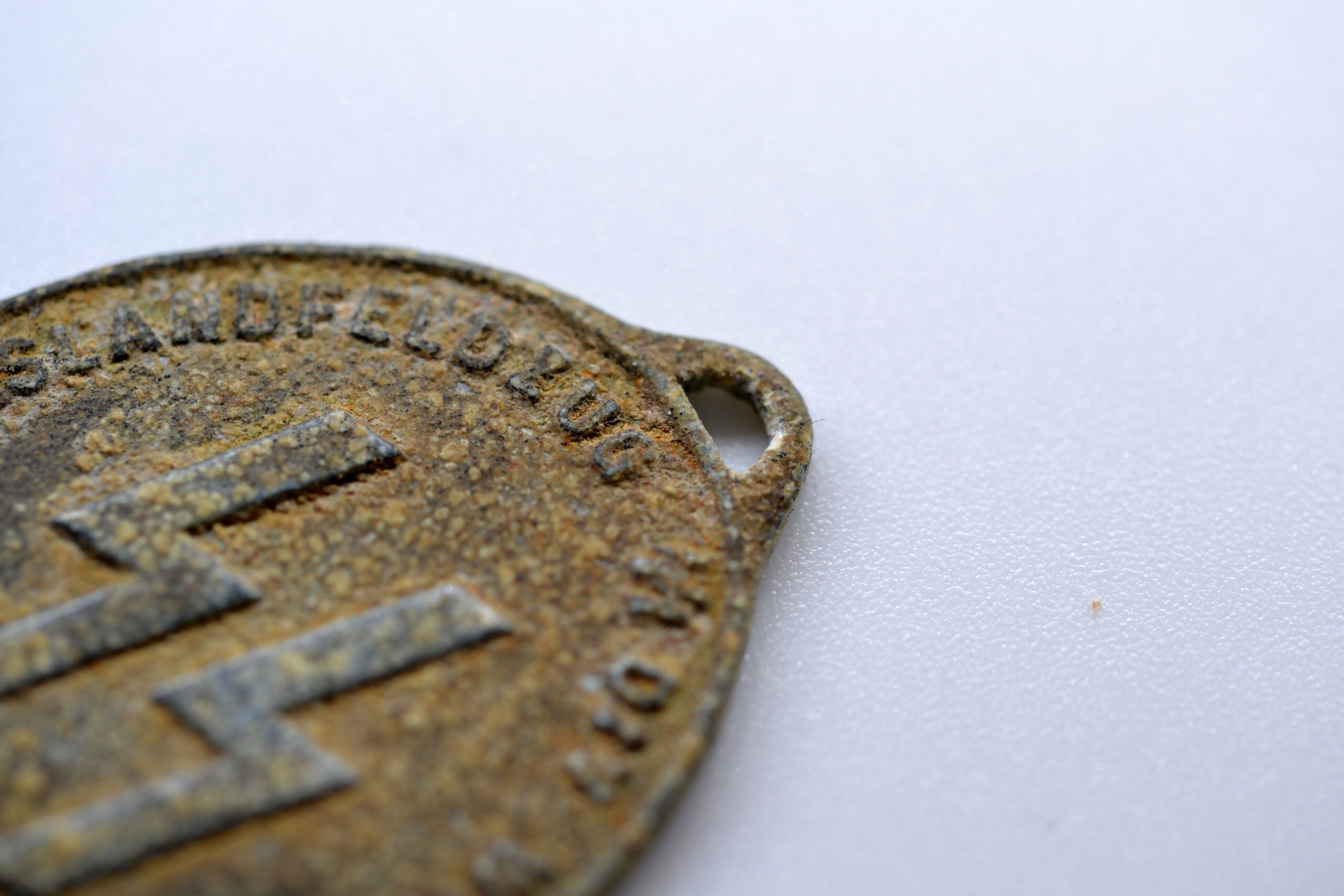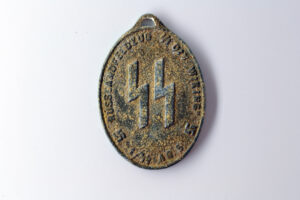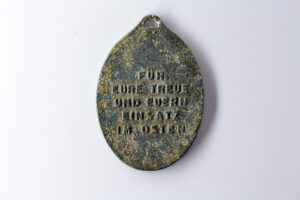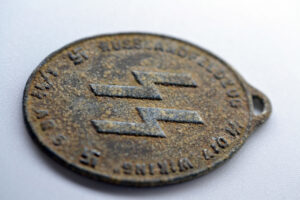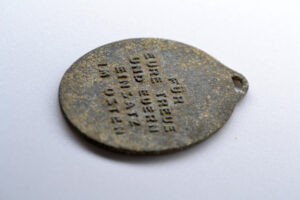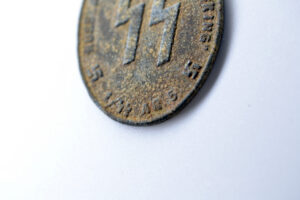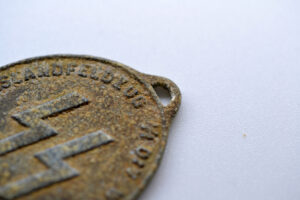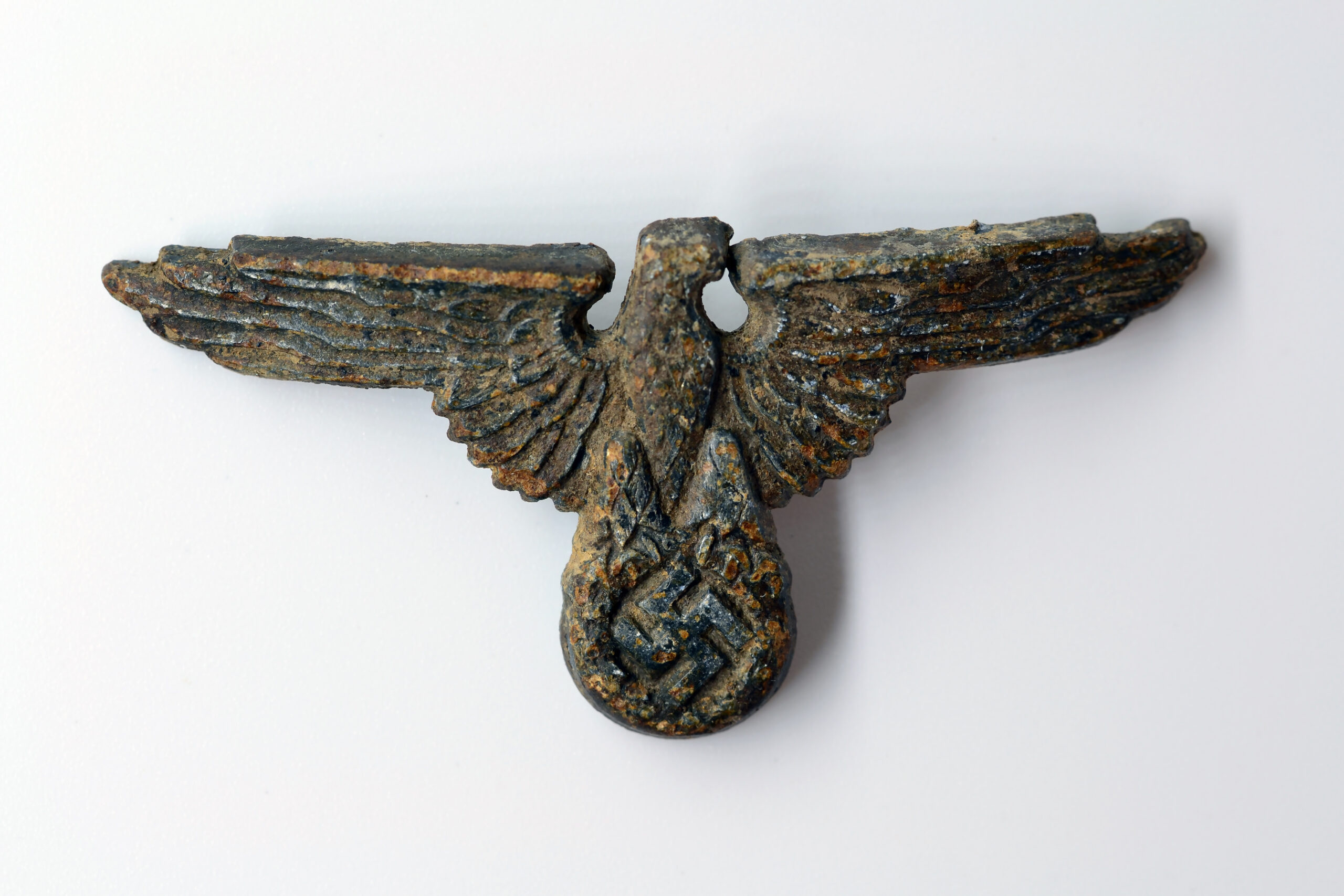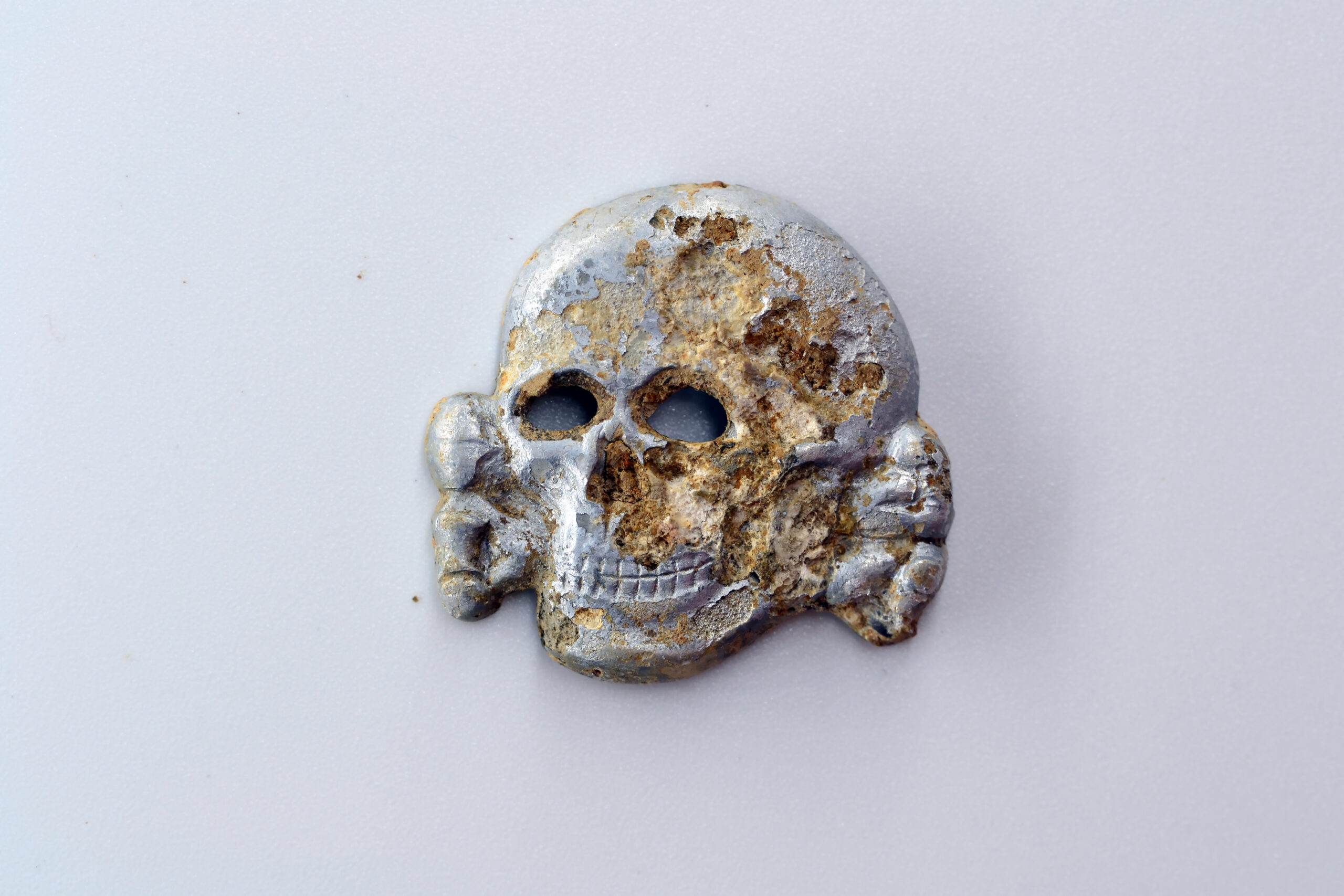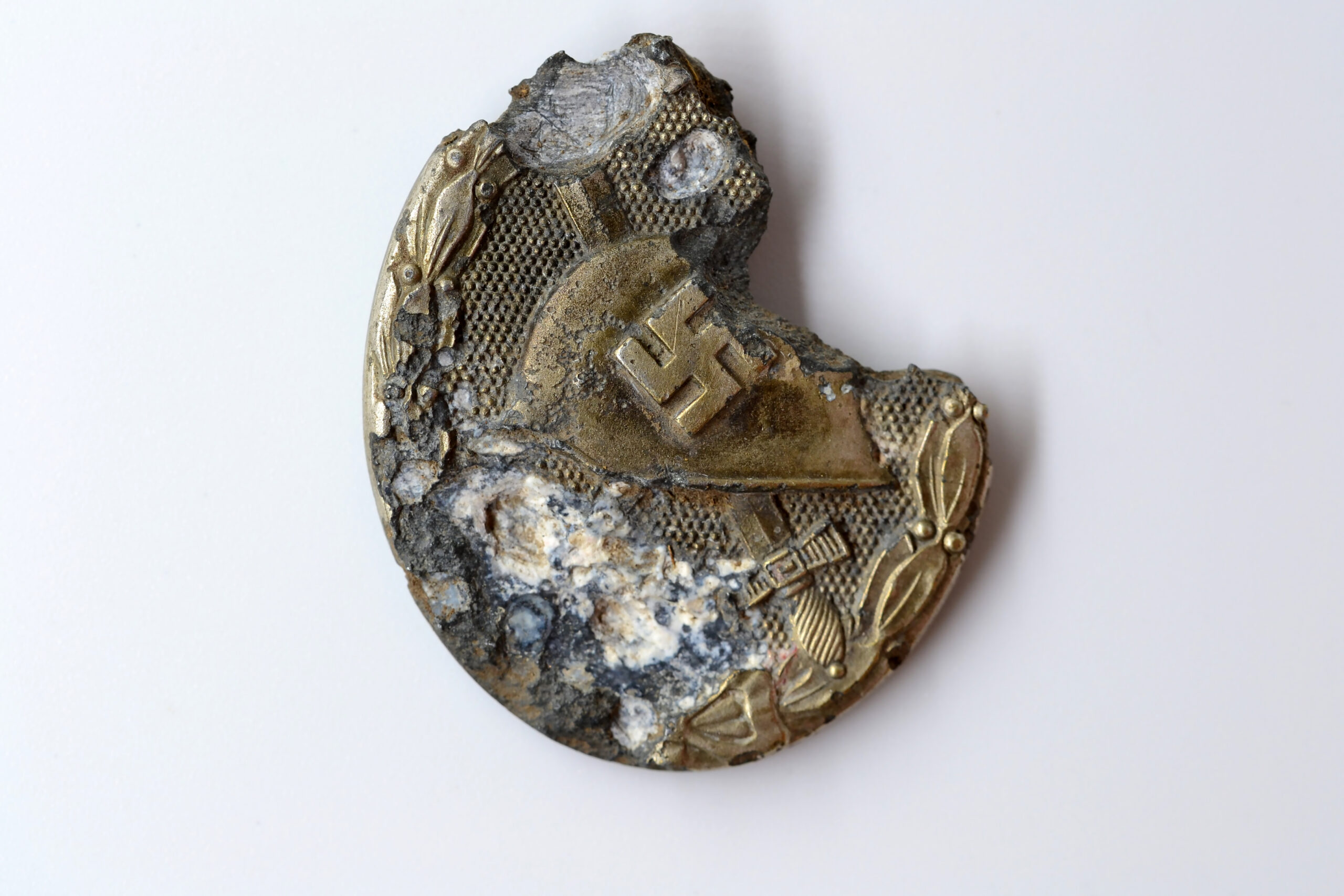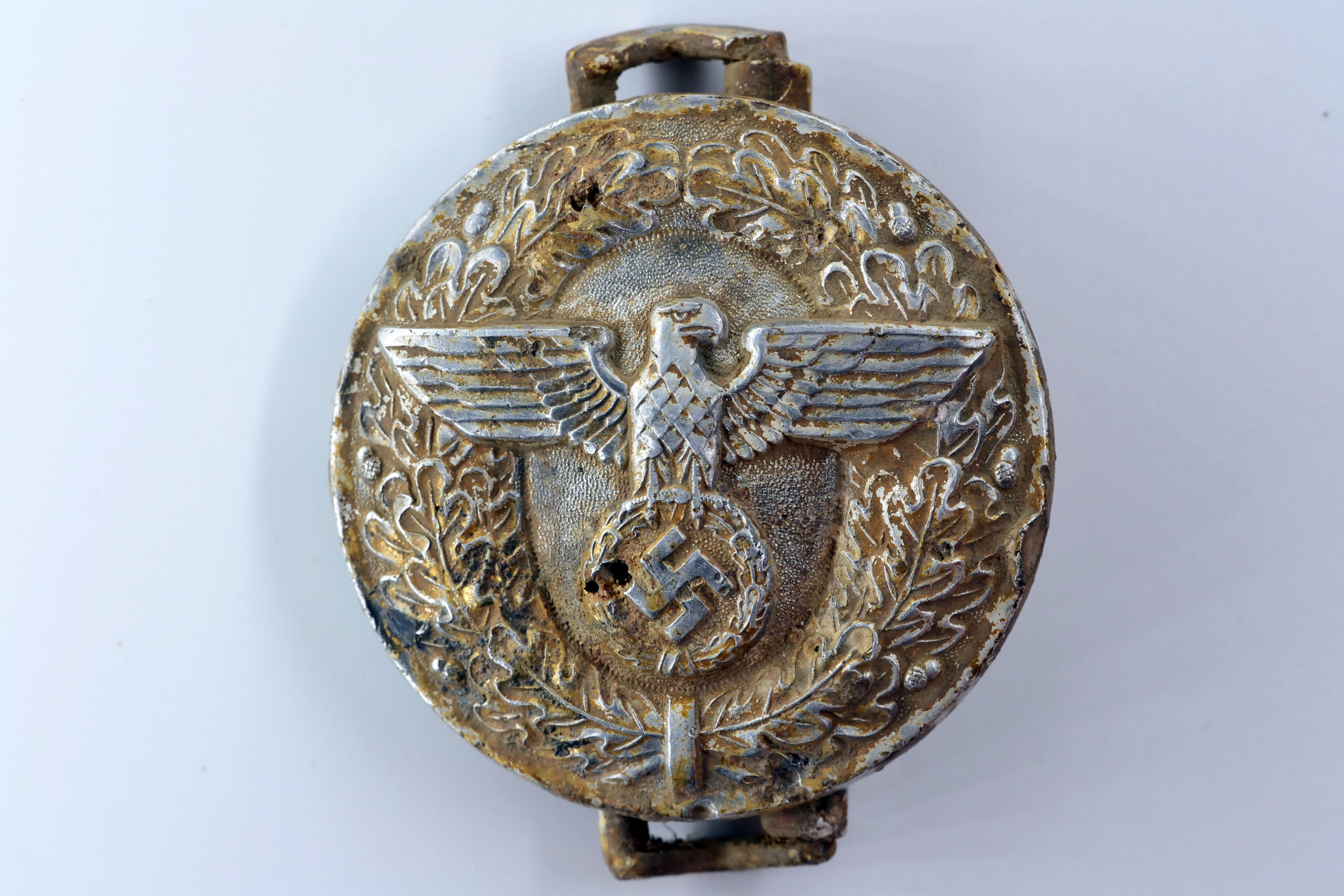These commemorative badges from the SS-Division “Wiking” have been surrounded by controversy for some time. We believe these badges are without a doubt original. Besides they have been found by trustable sources, let's examine these badges in more detail. They are all attributed to the very same battery: the
1./SS-Artillerie-Regiment 5. The text SS-Division “Wiking” and Russlandfeldzug mean they were probably made at some point in 1942, to commemorate the Russian campaign of 1941-1942, and before the division got renamed into SS-Panzer-Grenadier-Division “Wiking” in November 1942.
The “Wiking” division fought alongside the 1. Gebirgs-Division during the entire Russian campaign in 1941, and the divisions were neighbours of each other at the Mius front in 1941 and 1942. The 1./SS-Artillerie- Regiment 5 must have helped out the 1. Gebirgs-Division at some point, since on 23 April 1942, the following regimental order was given out by the HQ of SS-Artillerie-Regiment 5:
SS-Artillerie Regiment 5 Rgt.St.Qu., den 23. April 1942
Regimentstagesbefehl – Nr. 24
1.) Anerkennung:
Der 1. Batterie wurde für besondere Leistungen während des Einsatzes bei der Gebirgsjäger-Division als Anerkennung das “Edelweissabzeichen” verliehen. Die SS Division Wiking hat die Genehmigung erteilt, dass die Angehörigen der 1. Batterie das Abzeichen an der Feldmütze für die Dauer des Krieges tragen können.
Because of supporting the 1. Gebirgs-Division, members of the 1./SS-Artillerie-Regiment 5 were awarded the privilege of wearing the Edelweiss badge on their caps, as the only subunit of the 5. SS-Division “Wiking”. There was clearly a special connection between exactly the 1./SS-Artillerie-Regiment 5 and the 1. Gebirgs-Division.
It is also very interesting that many subunits of the 1. Gebirgs-Division had commemorative badges made in 1942, mostly on company level. Considering the fact that members of the 1./SS-Artillerie-Regiment 5 were allowed to wear the Edelweiss badge on their caps, it is entirely logical and plausible that a commemorative badge was made as well, inspired by this tradition of the 1. Gebirgs-Division. We have never seen such a badge coming from a veteran of the “Wiking” division, but that does not mean they were never made. Many can be traced back to the Cherkassy break-out route, but they have been found on other
battlefields as well.
The badge is made of zinc, roughly 4 cm high, and in very nice solid condition, with the text clearly readable. We have no doubt these are the real deal, and we hope we have provided enough evidence to conclude they are.


